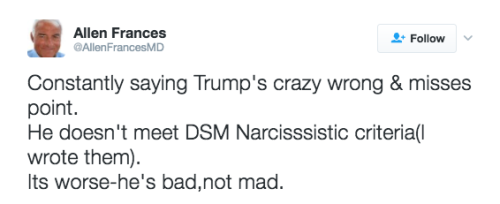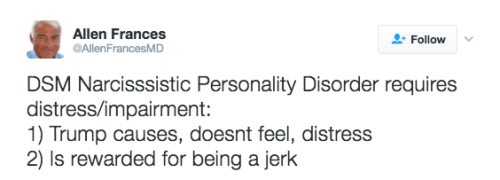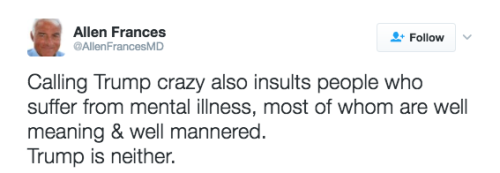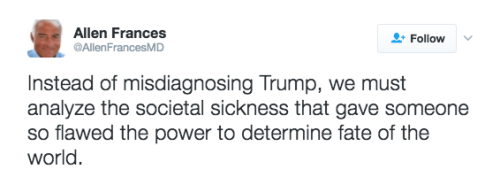This Is Great :) My Favorite Is Proof By Ghost Reference, What Is Yours?

This is great :) My favorite is proof by ghost reference, what is yours?
More Posts from Philosophical-amoeba and Others


What the heck is ‘Johnston’s Fluid Beef’? According to this Victorian age flyer in the Canada Medical and Surgical Journal of April 1883, it is “the most perfect food for invalids ever introduced, concentrated preparation for nutritious beef tea or soup, specially recommended by the Medical Faculty.” But the directions for use on page 4 may be a recipe for botulism: “Add a small teaspoon to a cup of boiling water and season to taste; or as a sandwich paste it may be used on toast, with or without butter. The can may remain open for weeks without detriment to the contents.”
The story of ‘Johnston’s Fluid Beef’ began in 1870 in the Franco-Prussian War, when Napoleon III ordered a million cans of beef to feed troops. John Lawson Johnston, a Scot living in Montreal, had the task of providing it. Transportation and storage were problematic, so Johnston created a product known as Johnston’s Fluid Beef, later called Bovril, to meet the need. By 1888, Johnston’s Fluid Beef became a British staple sold in 3,000 U.K. public houses, grocers and dispensing chemists, and remains so today. A major downturn in sales occurred in 2004 when the company changed its formula to make Bovril vegetarian. The Guardian reported in 2007: “Rather than any new-found vegetarian gusto, the move [by Bovril] to yeast extract in 2004 was largely triggered by concerns about beef consumption and BSE [bovine spongiform encephalopathy], which affected Bovril’s export market.” But by 2006, the beef was back in Bovril and the company survives. Modern directions for use are recommended.




Everyday Phenomena: The Maillard Reaction
At first glance, steak, French fries, bread, milk caramel, and soy sauce don’t have very many similarities. However, the preparation of these foods all have one thing in common: browning that occurs via the Maillard (my-YAR) reaction.
The Maillard reaction was first discovered in 1912 by Louis-Camille Maillard, and refers to a long chain of reactions that ultimately leads to browning of food. This chain typically begins with the condensation of an amine (often the amino acid lysine) with a reducing sugar (containing an aldehyde); one example of this Amadori rearrangement is shown above with lysine and glucose.
This Amadori product can react in a variety of different ways, including dehydration and deamination to produce a diverse array of molecules that give browned food a distinctive flavor; a few of these compounds are shown above. At the end of the sequence of reactions that occur during browning is a class of polymeric compounds known as melanoidins, which lend a brown color to the food.
Below about 140°C (280°F), the Maillard reaction does not proceed at an appreciable rate, although alkaline conditions (such as the lye used to make pretzels) can accelerate the process. Without this reaction, many foods we enjoy now wouldn’t be nearly as tasty!
Further Reading: Hodge, J. E., J. Agric. Food Chem. 1953, 1 (15), 928-943 (Full text)

Entanglement Made Simple, a divulgative article of theoretical physicist and Nobel laureate Frank Wilczek, in Quanta Magazine.
Image by James O'Brien for Quanta Magazine



Knowing the 20 Amino Acids is definitely a MUST for the 2015 MCAT
Amino acids that are usually negative (i.e. de-protonated) at physiological pH:
- Glutamate (E) Glu, and Aspartate (D) Asp
Amino acids that are usually positive (i.e. protonated) at physiological pH:
- Lysine (K) Lye, Arginine ® Arg
Histidine is sometimes charged at physiological pH.
physiological pH = 7, Neutral
I read once that shortly before The Merchant Of Venice was written, Queen Elizabeths doctor (who was Jewish) tried to poison her; is that true?
Sort of.
There was a doctor accused of trying to poison Queen Elizabeth. His name was Roderigo Lopez. He was Jewish and of Spanish descent and was fairly well off. He was accused of trying to poison her and conspiring against her with Spanish officials. I believe he is the only English physician to have been executed.
HOWEVER, we don’t know if he actually wanted to poison her. There was no attempt I believe, just accusations. He stated before he died that he “loved the Queen as much as he loved Jesus Christ” which can (and was) be interpreted in many ways. Some people think the Queen thought he was innocent because she took a long time to sign his death warrant. The character may have been the inspiration for Shylock in the Merchant of Venice, since they are both considered villains and evil because they’re Jewish but no one is 100% sure. Based on what I’ve heard, I don’t think he actually wanted to poison the queen and was probably just a target of antisemitism and maybe anti Spanish sentiment but who knows.
Thanks for bringing this up! I’m sure people would love to read about it. I’ve put the Wikipedia article below:
https://en.wikipedia.org/wiki/Roderigo_Lopez#Royal_physician
-Admin @thesunofyork






The psychiatrist who wrote the criteria for narcissism just made an extremely important point about what’s wrong with diagnosing Trump with mental disorders
Dr. Allen Frances says in speculating about Trump’s mental health, we are doing a disservice to those who do suffer from mental illness. In a series of tweets, he explained why he doesn’t think Trump is a narcissist — and how harmful it can be for us to keep assuming that he is.










Fairyland, or, Through the Enchanted Forest.
[Gloucester, England], [Roberts Brothers], [ca. 1890-1915].
Bryn Mawr College Special Collections GV1469.F221 T4 1890z
This whimsical board game, with its blinding powder, cabbage, meat, and cake tokens, has it all! Wild two-headed animals ravage the forest and hapless children must make it through armed only with odd grocery items! The game is a new addition to the Bryn Mawr College Special Collections as part of the Ellery Yale Wood Collection of Children’s Books.
When my alcoholic uncle died - and how it impacted my life as a nurse
A recent post from another nurse was so beautifully honest and vulnerable that it made me lose my snark and just get human for a minute. So I will share an experience and I have permission from all involved. I had an uncle who was a terrible alcoholic. It ravaged every aspect of his life, his work as a union tradesman, his ability to be a father or husband and his relationships with his brothers and sisters. My mom and I often visited him when he’d get admitted to the floor. I could never bear to see him in the ER. Dirty, belligerent, withdrawing in the DTs. I was embarrassed because I knew he was a frequent flier. I was embarrassed that I was embarrassed. We tried to drop him groceries and buy his Dilantin every month, but he moved around a lot, mostly renting rooms above taverns. He wanted nothing to do with sobriety. He used drugs when he could, but whiskey was his poison. In the end he only tolerated a few beers a day to keep away the shakes. To any nurse or medic or doc who new him he was a local drunk, but to me he was my uncle. I knew him as a kind loving man as well. I remember family BBQs and him tossing me up in the air as a kid. I remember him showing up drunk to thanksgiving and not making it out out of the car before passing out. I remember the disappointment in my family’s faces. I remember the shame in his eyes. I remember driving around his neighborhood looking at the entrances of taverns to see if he was passed out. I wondered if anyone would know to call us if he died. I wondered if he even had any I.D. But they did call. And I knew when I saw him at age 55 in the ICU Weighing 90 lbs dying of Hep C and esophageal CA that he didn’t have a lot of time left. I was a nursing student and an ER tech but I knew in my heart this time was different. I saw people fear him. I saw nurses treat him as if he was a leper. One yelled at him to be still while she gave him a shot of heparin and he grimaced in pain. Nurses came in one by one to start a heplock and he grimaced in pain. Despite knowing better after the 4th nurse was unsuccessful I begged them to stop and give him a break. My hospital I worked accepted him into impatient hospice. I was relieved. When he arrived I saw the 2 EMTs toss him on the hospice bed and walk out without saying a word while he grimaced in pain. They probably got held over and he probably didn’t seem like an urgent transport. They didn’t want to touch him. I didn’t say anything. I was scared to touch him too. He was emaciated with a huge head and a gaunt appearance. I wondered if he had AIDS. I felt bad for thinking that. I still kissed his forehead and told him he was going to be okay. Because I loved him. He was my family. And then I saw nurses treat him with kindness. I saw the beauty of a non judgemental hospice team make his last 96 hours on Earth a time where he could make peace with his demons. I saw Roxy drops for the first time and I saw him get some relief from the pain of untreated cancer, from the pain of dying. I saw them allow me break the rules and lift his frail body into a wheelchair, fashion an old fashioned posey to hold him up and take him down stairs for his last cigarette on Route 30. I was able to spend my breaks with him. I got to suction him and help give him a bed bath. I got off my 3-11 shift and spend a few hours with him watching a baseball game on replay. I sat with him in silence and I held his hand. I finally knew what people meant when they said the dying watch their life play out in their minds. I swear I could see it happening. I asked him if he was thinking about things he said “yep”. I asked him if he wanted me to stay or go and he said “stay”. So I stayed. I heard the death rattle for the first time. I cried to a veteran hospice nurse and she explained how the Scopolamine patch would help. I finally felt what it was like to be helpless to a family member in need and her words of comfort and years of experience meant everything to me. She said he probably had 48 hours at the most. I read “Gone from my sight” the blue book of hospice by Barbara Karnes. The whole family trickled in. His kids, all his brothers and sisters and nieces and nephews. His children told him they loved him and they forgave him. We kissed his forehead and washed his hair. My mother shaved his face. His daughter said words of kindness that relieved him of any guilt or regret. I saw this beautiful cousin of mine watch me suction him and she asked how I could be so calm and so strong. I didn’t feel strong or knowledgeable but when you are the “medical person” in the family they see things in you that you didn’t know you had. We surrounded him with love and light and he died surrounded by everyone who ever meant anything to him. The nurses even cried. I got to see the dying process for what it was. It was beautiful and at the same time so humbling it brought me to my knees. I have never forgotten that feeling and I pray I never do. Is alcoholism a disease? We debate it as health care providers and wonder about the others whose lives have been impacted by the actions of an alcoholic. The amends that never got made. I guess I don’t care if it’s a disease, a condition, or a lifetime of conscious choices and poor judgement. In the end it’s a human being, usually a dirty foul smelling human being with missing teeth who may or may not be soiled in urine and vomit. Sometimes kicking, hurling obscenities, racial slurs, or spitting. Often doing all of the above at once. It’s hard to empathize with a human being who arrives packaged up that way. It’s hard to care or to want to go above and beyond. And I don’t think you should ever feel guilty if you don’t have those feelings. That is okay. It’s natural to wonder about the damage these people may have done to others. Wonder how many lives they might have ravaged. Please don’t take their pain as your own. At least try not to. It is not your pain to carry. And we all know that is easier said than done. But please, Treat them with dignity. They feel. They hear you. Give them the care you know you are capable of giving. I can tell you I hold a special place in my heart for every nurse who touched my uncle with a gentle hand. Who cleaned him for the fifth time when he was vomiting stool. Who asked him to smile. Who smiled back at him. Who stroked his forehead and put a cool washcloth on it. I am eternally grateful for anyone that saw beyond his alcoholism and saw a person. A human. A child of God (if you believe in God). A father. A son. An uncle. And I believe in my heart he felt the same way, even if he didn’t or couldn’t say it. If you have that patient. That difficult, hard to like, dreadful patient. Don’t think you have to love them or even like them. You don’t. But if you can preserve their dignity and show them the kind of nursing care that anyone would deserve, than you are good. You are the reason we are the world’s most trusted profession. And even though you don’t know it, someone saw and felt it, and it meant the world to them. Go to bed and sleep soundly because you deserve that. - J.R. RN

Neuro chip records brain cell activity at higher resolution
Brain functions are controlled by millions of brain cells. However, in order to understand how the brain controls functions, such as simple reflexes or learning and memory, we must be able to record the activity of large networks and groups of neurons. Conventional methods have allowed scientists to record the activity of neurons for minutes, but a new technology, developed by University of Calgary researchers, known as a bionic hybrid neuro chip, is able to record activity in animal brain cells for weeks at a much higher resolution. The technological advancement was published in the journal Scientific Reports.

“These chips are 15 times more sensitive than conventional neuro chips,” says Naweed Syed, PhD, scientific director of the University of Calgary, Cumming School of Medicine’s Alberta Children’s Hospital Research Institute, member of the Hotchkiss Brain Institute and senior author on the study. “This allows brain cell signals to be amplified more easily and to see real time recordings of brain cell activity at a resolution that has never been achieved before.”
The development of this technology will allow researchers to investigate and understand in greater depth, in animal models, the origins of neurological diseases and conditions such as epilepsy, as well as other cognitive functions such as learning and memory.
“Recording this activity over a long period of time allows you to see changes that occur over time, in the activity itself,” says Pierre Wijdenes, a PhD student in the Biomedical Engineering Graduate Program and the study’s first author. “This helps to understand why certain neurons form connections with each other and why others won’t.”
The cross-faculty team created the chip to mimic the natural biological contact between brain cells, essentially tricking the brain cells into believing that they are connecting with other brain cells. As a result, the cells immediately connect with the chip, thereby allowing researchers to view and record the two-way communication that would go on between two normal functioning brain cells.
“We simulated what Mother Nature does in nature and provided brain cells with an environment where they feel as if they are at home,” says Syed. “This has allowed us to increase the sensitivity of our readings and help neurons build a long-term relationship with our electronic chip.”
While the chip is currently used to analyze animal brain cells, this increased resolution and the ability to make long-term recordings is bringing the technology one step closer to being effective in the recording of human brain cell activity.
“Human brain cell signals are smaller and therefore require more sensitive electronic tools to be designed to pick up the signals,” says Colin Dalton, adjunct professor in the Department of Electrical and Computer Engineering at the Schulich School of Engineering and a co-author on this study. Dalton is also the facility manager of the University of Calgary’s Advanced Micro/nanosystems Integration Facility (AMIF), where the chips were designed and fabricated.
Researchers hope the technology will one day be used as a tool to bring personalized therapeutic options to patients facing neurological disease.
-
 aragornsforgottentaxpolicy liked this · 4 months ago
aragornsforgottentaxpolicy liked this · 4 months ago -
 enigmatist17 liked this · 4 months ago
enigmatist17 liked this · 4 months ago -
 mistress-of-the-empire reblogged this · 4 months ago
mistress-of-the-empire reblogged this · 4 months ago -
 mistress-of-the-empire liked this · 4 months ago
mistress-of-the-empire liked this · 4 months ago -
 tanilealto liked this · 6 months ago
tanilealto liked this · 6 months ago -
 princepsmathematics reblogged this · 7 months ago
princepsmathematics reblogged this · 7 months ago -
 nerd394 liked this · 7 months ago
nerd394 liked this · 7 months ago -
 eva-the-fanatic liked this · 7 months ago
eva-the-fanatic liked this · 7 months ago -
 fillybs reblogged this · 8 months ago
fillybs reblogged this · 8 months ago -
 joesshoelaces liked this · 8 months ago
joesshoelaces liked this · 8 months ago -
 yunez liked this · 8 months ago
yunez liked this · 8 months ago -
 sugarstarlights liked this · 8 months ago
sugarstarlights liked this · 8 months ago -
 solipseismic reblogged this · 8 months ago
solipseismic reblogged this · 8 months ago -
 solipseismic liked this · 8 months ago
solipseismic liked this · 8 months ago -
 unfamiliarlibraries reblogged this · 8 months ago
unfamiliarlibraries reblogged this · 8 months ago -
 rougesisyphe reblogged this · 8 months ago
rougesisyphe reblogged this · 8 months ago -
 rougesisyphe liked this · 8 months ago
rougesisyphe liked this · 8 months ago -
 elemmirekirk5031 reblogged this · 8 months ago
elemmirekirk5031 reblogged this · 8 months ago -
 elemmirekirk5031 liked this · 8 months ago
elemmirekirk5031 liked this · 8 months ago -
 aqua-fortis liked this · 8 months ago
aqua-fortis liked this · 8 months ago -
 clip-clip-clippy reblogged this · 8 months ago
clip-clip-clippy reblogged this · 8 months ago -
 podni-goblin liked this · 8 months ago
podni-goblin liked this · 8 months ago -
 thallium6193 liked this · 8 months ago
thallium6193 liked this · 8 months ago -
 blueoreocupcakes liked this · 8 months ago
blueoreocupcakes liked this · 8 months ago -
 aliteralracoon reblogged this · 8 months ago
aliteralracoon reblogged this · 8 months ago -
 beelper-owo liked this · 8 months ago
beelper-owo liked this · 8 months ago -
 mazhaiyil-kaadhal reblogged this · 8 months ago
mazhaiyil-kaadhal reblogged this · 8 months ago -
 princepsmathematics liked this · 8 months ago
princepsmathematics liked this · 8 months ago -
 psychicdetectivebread liked this · 8 months ago
psychicdetectivebread liked this · 8 months ago -
 chocolatey-umbreon liked this · 8 months ago
chocolatey-umbreon liked this · 8 months ago -
 russian-doomer-academia liked this · 8 months ago
russian-doomer-academia liked this · 8 months ago -
 dissertationprocrastination reblogged this · 8 months ago
dissertationprocrastination reblogged this · 8 months ago -
 dr-deathinhexadecimal reblogged this · 8 months ago
dr-deathinhexadecimal reblogged this · 8 months ago -
 dr-deathinhexadecimal liked this · 8 months ago
dr-deathinhexadecimal liked this · 8 months ago -
 theriflesspiral liked this · 8 months ago
theriflesspiral liked this · 8 months ago -
 ireblogexclusivelyformywife reblogged this · 8 months ago
ireblogexclusivelyformywife reblogged this · 8 months ago -
 twowaypr reblogged this · 8 months ago
twowaypr reblogged this · 8 months ago -
 twowaypr liked this · 8 months ago
twowaypr liked this · 8 months ago -
 definately-not-a-cat reblogged this · 8 months ago
definately-not-a-cat reblogged this · 8 months ago -
 aspirational-sword-lesbian liked this · 8 months ago
aspirational-sword-lesbian liked this · 8 months ago -
 sock-dimension liked this · 8 months ago
sock-dimension liked this · 8 months ago -
 unashamedly-enthusiastic liked this · 8 months ago
unashamedly-enthusiastic liked this · 8 months ago -
 just--elope liked this · 8 months ago
just--elope liked this · 8 months ago -
 batteredblueberry reblogged this · 8 months ago
batteredblueberry reblogged this · 8 months ago -
 batteredblueberry liked this · 8 months ago
batteredblueberry liked this · 8 months ago -
 sub-at-omicsteminist reblogged this · 8 months ago
sub-at-omicsteminist reblogged this · 8 months ago -
 sub-at-omicsteminist liked this · 8 months ago
sub-at-omicsteminist liked this · 8 months ago -
 eheu-vae-mihi reblogged this · 8 months ago
eheu-vae-mihi reblogged this · 8 months ago -
 shymathlesbian reblogged this · 8 months ago
shymathlesbian reblogged this · 8 months ago -
 aliteralracoon liked this · 8 months ago
aliteralracoon liked this · 8 months ago
A reblog of nerdy and quirky stuff that pique my interest.
291 posts
